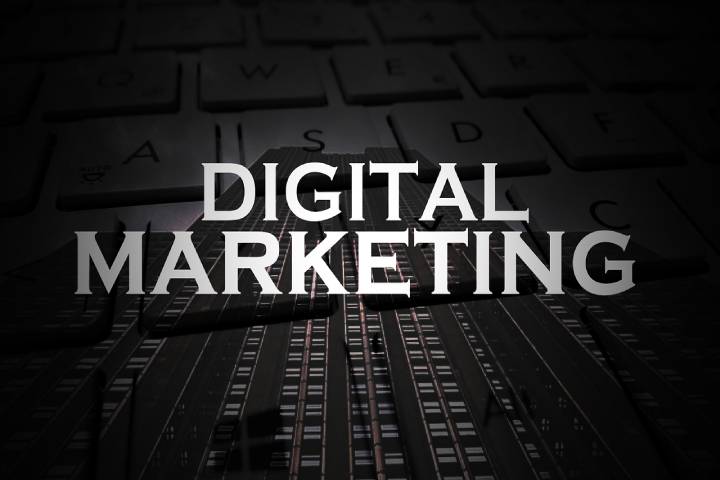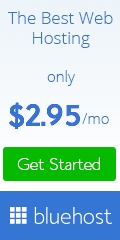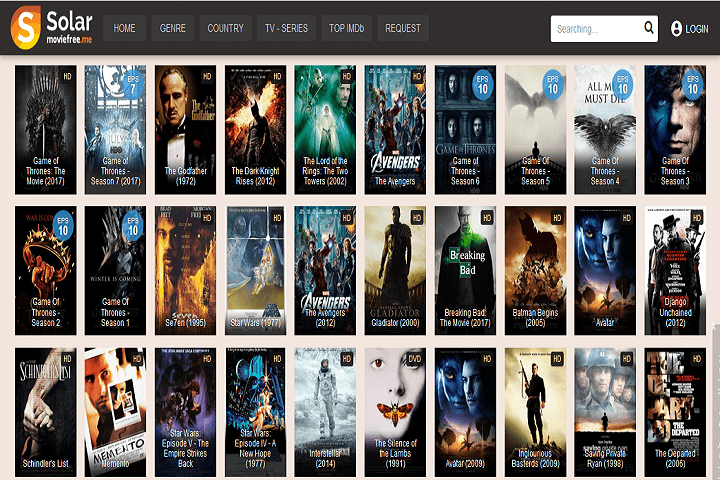Business
How To Create A Seamless Checkout Experience
Ultimately, a seamless and positive checkout experience can boost customer satisfaction and create a stronger association with your brand.

The checkout process is an integral part of the customer journey, significantly influencing purchasing decisions. An ideally designed checkout page can streamline the buying experience, leading to an increase in conversion rates.
Moreover, a well-organized, intuitive checkout experience can motivate customers to complete their transactions, enhancing the abandoned cart recovery rate. Ultimately, a seamless and positive checkout experience can boost customer satisfaction and create a stronger association with your brand.
This connection often translates into repeat purchases and invaluable word-of-mouth referrals from satisfied customers. If these are your business goals, then read on for five excellent ways to create a seamless checkout experience.
Table of Contents
1. Provide More Payment Options
Diversifying payment options is critical to facilitating a smooth and flexible customer checkout process. By accommodating various payment methods, you cater to various customer preferences. Traditional credit and debit card payments, digital wallets, bank transfers, and even options like cash on delivery should be considered.
It’s important to understand that payment preferences can vary significantly depending on your target audience and their geographical location. For example, customers from different regions may prefer specific local payment methods. By offering these options, you demonstrate respect and understanding of your customer’s needs and preferences, which can significantly boost your conversion rates.
Lastly, remember that security is a paramount concern regarding online transactions. Ensure all your payment options are secured and trusted to prevent potential data breaches or ecommerce fraud. Transparency about security measures can build customer trust and encourage more transactions.
2. Ensure Your Checkout Page Is Mobile-Friendly
With the rapid rise in mobile device usage, ensuring that your checkout page is mobile-friendly is more important than ever. Users should be able to navigate your checkout page easily, fill in their details, and complete the purchase without experiencing any glitches or frustrations, regardless of their device.
A mobile-friendly checkout page is not just about compatibility but also about design. The design must be intuitive, with clear calls to action and minimal input fields. Moreover, the text and buttons should be sufficiently large to facilitate easy touch interactions.
Testing is vital in ensuring mobile friendliness. Regularly test your checkout process on different devices and browsers to spot any issues. Remember, a smooth mobile checkout experience can increase conversions and customer satisfaction.
3. Allow Guest Checkout
While it’s beneficial for businesses to have customers create accounts for future marketing and retargeting, it’s important to respect the customer’s choice. Mandatory account creation can deter customers, causing them to abandon their carts and reducing your conversion rates.
Offering a guest checkout option can enhance the user experience by speeding up the checkout process. It caters to customers in a hurry or those who don’t want to commit to an account. While you can still encourage account creation by highlighting its benefits, the choice should ultimately be left to the customer.

Remember, the aim is to reduce barriers to purchase. A simple and straightforward guest checkout process can significantly improve your conversion rates and customer satisfaction, even if it means potentially missing out on gathering some customer data.
4. Create A One-Page Checkout Page
A one-page checkout design is a strategy that can streamline your checkout process by minimizing the number of steps needed to complete a purchase. This approach reduces the likelihood of customers abandoning their carts due to a complicated or lengthy checkout process.
A one-page checkout page should include essential fields such as billing and shipping information, payment methods, and an order summary. This page should be designed with simplicity and user-friendliness in mind. Also, use auto-fill features where possible to speed up the process.
Bear in mind that this strategy doesn’t suit every business. For example, businesses with a large number of stock-keeping units or complex shipping rules might need more pages for a comprehensive checkout process. However, if a one-page checkout fits your business model, it can significantly improve the user experience and conversion rates.
5. Utilize “Buy Now” Buttons
‘Buy Now’ buttons can greatly enhance the user experience by offering a quick and straightforward way to make a purchase. These buttons allow customers to bypass the traditional shopping cart route, facilitating an immediate checkout process.
When implementing the ‘Buy Now’ buttons, ensure they are placed strategically. They should be easily visible, usually close to the product details. Additionally, their design should be compelling and consistent with your brand identity to attract customers’ attention.
However, while the ‘Buy Now’ buttons can accelerate checkout, they should be used thoughtfully. For some customers, particularly those intending to buy multiple items, the traditional cart process might still be preferable. Therefore, ensure you offer both options to cater to different shopping styles.
Also, be aware that the ‘Buy Now’ buttons require a robust system in the background to ensure a seamless and secure immediate transaction. Balancing convenience and security is the key to the effective utilization of the ‘Buy Now’ buttons.
Conclusion
Optimizing the checkout process is integral to boosting conversion rates and customer satisfaction. Diverse payment options, a mobile-friendly design, guest checkout options, and streamlined processes such as a one-page checkout or ‘Buy Now’ buttons all contribute to a user-friendly buying experience.
Remember that it’s crucial to balance customer convenience with robust security measures and to cater to varying customer preferences. When implemented effectively, these strategies can significantly improve your business’s performance and customer retention.
Business
Tax Filing Advice: Self-employment Tax (IRS Form 1040)
In this post, we’ll show you how to fill out Form 1040 and offer some tips on how to minimize your tax obligations. Tax Filing Advice – Self-employment Tax – IRS Form 1040.

Filing your taxes can be challenging, especially if you are a freelancer. As a freelancer, you are required to pay self-employment tax, maintain track of your revenues and expenses, and submit projected tax payments throughout the year. You can complete an IRS Form 1040 with a little help and a quarterly tax calculator, despite the fact that it could appear challenging. In this post, we’ll show you how to fill out Form 1040 and offer some tips on how to minimize your tax obligations.
Table of Contents
1. Assemble Your Papers
Before you start filling out your Form 1040, you must gather all the necessary information and paperwork. Your W-2s, 1099s for any freelance work you did, receipts for any anticipated tax deductions, and any other financial records you might have are included in this. You must also include your Social Security number and the Social Security numbers of any dependents you wish to claim.
2. Verify Your Filing’s Status
Your file status affects your tax rate and the size of your standard deduction. Determine which filing status is appropriate for you based on your marital status, the number of dependents you have, and other factors.
3. Ascertain your income
Your total income for the tax year is what is referred to as your gross income. This includes all forms of income, including wages, salaries, tips, and revenue from side jobs. Add up your income for the tax year and gather all of your supporting papers. List all of your sources of income from contract work.
4. Remove Your Modifications
By deducting adjustments from your gross income, you can reduce your taxable income. They also pay your health insurance premiums, student loan interest, and IRA contributions if you work for yourself.
5. Choose Your Tax Savings
By taking some expenses out of your taxable income, you can reduce it. The two distinct types of tax deductions are standard and itemized. The standard deduction is an agreed-upon sum of money that is available to all tax filers. As itemized deductions, you are allowed to deduct some costs like state and local taxes, charity giving, and mortgage interest. It is better to select the tax deduction that would result in the greatest financial savings.
6. In Step Six, determine your taxable income.
After subtracting either your standard deduction or your itemized deduction from your AGI, your taxable income will be determined. According to federal law, this amount is your taxable income.
7. Choose Your Tax Credits
They are made up of education, earned income, and child tax credits. To reduce your tax obligation, find out which tax credits you are eligible for.
8. Find Out How Much Tax You Owe
Your overall tax liabilities, less any payments or credits, are referred to as your tax burden.

9. Verify Your Upcoming Tax Payments
If you are self-employed, you must make estimated tax payments throughout the year. Check your expected tax payments throughout the year to ensure you made the required amount to avoid underpayment penalties.
10. Finishing Schedule C
Schedule C, the relevant form, is used to report your self-employment earnings and expenses. To calculate your self-employment tax, which is based on your net self-employment income, use Schedule C. In addition to this, you will also owe regular income tax.
11. Add Up Your Credits and Payments
Add all of your year-end payments, such as estimated tax payments and any taxes you have withheld from your pay. If you qualify, take a deduction for any tax credits. Here, your overall payments and credits will be displayed.
12. Figure out whether you owe a refund or are due one.
You should evaluate your entire tax burden in relation to your total payments and credits. If your tax due is greater than the sum of your payments and credits, you will be obliged to pay extra tax.
13. Upload Your Return
When you’ve finished filling out Form 1040 and any necessary attachments, sign and date your return, and then send it to the relevant IRS address. Make sure to keep a copy of your return and any supporting documents for your keeping.
14. Tips on How to Cut Your Taxes as Much as Possible
Now that you know how, let’s speak about how to complete Form 1040 so that you may maximize your tax savings as a freelancer.
Using tax deductions is a smart move.
As a freelancer, you might be eligible to write off a range of expenses from your taxes, such as business travel, office supplies, and office equipment. Keep note of all your expenses throughout the year in order to maximize any relevant deductions.
Submit projected tax payments
As was previously stated, self-employed individuals are obligated to make projected tax payments throughout the year. This allows you to keep track of your tax obligations and prevent underpayment fines.
You May Want To Add
The ability to deduct more business expenses and a lower tax rate on self-employment income are just two of the additional tax benefits that incorporating your freelancing business may offer. Speak with a tax professional if you’re unsure if incorporation is the right option for you.
Employ tax-favored retirement accounts.
You may be able to reduce your taxable income and increase your tax savings by contributing to tax-advantaged retirement plans like an IRA or Solo 401(k). Use these accounts if you meet the requirements.
Conclusion
Although filling out a Form 1040 can be intimidating, with a little planning and assistance, it is actually rather easy. Even though you may face certain challenges as a freelancer when attempting to maximize your tax savings, there are a number of strategies you may employ to help minimize your tax burden. By taking advantage of tax deductions, paying expected taxes, considering incorporation, and using tax-advantaged retirement plans, you may keep more of your hard-earned money in your pocket.
-

 Instagram2 years ago
Instagram2 years agoBuy IG likes and buy organic Instagram followers: where to buy them and how?
-

 Instagram2 years ago
Instagram2 years ago100% Genuine Instagram Followers & Likes with Guaranteed Tool
-

 Business4 years ago
Business4 years ago7 Must Have Digital Marketing Tools For Your Small Businesses
-

 Instagram3 years ago
Instagram3 years agoInstagram Followers And Likes – Online Social Media Platform

















